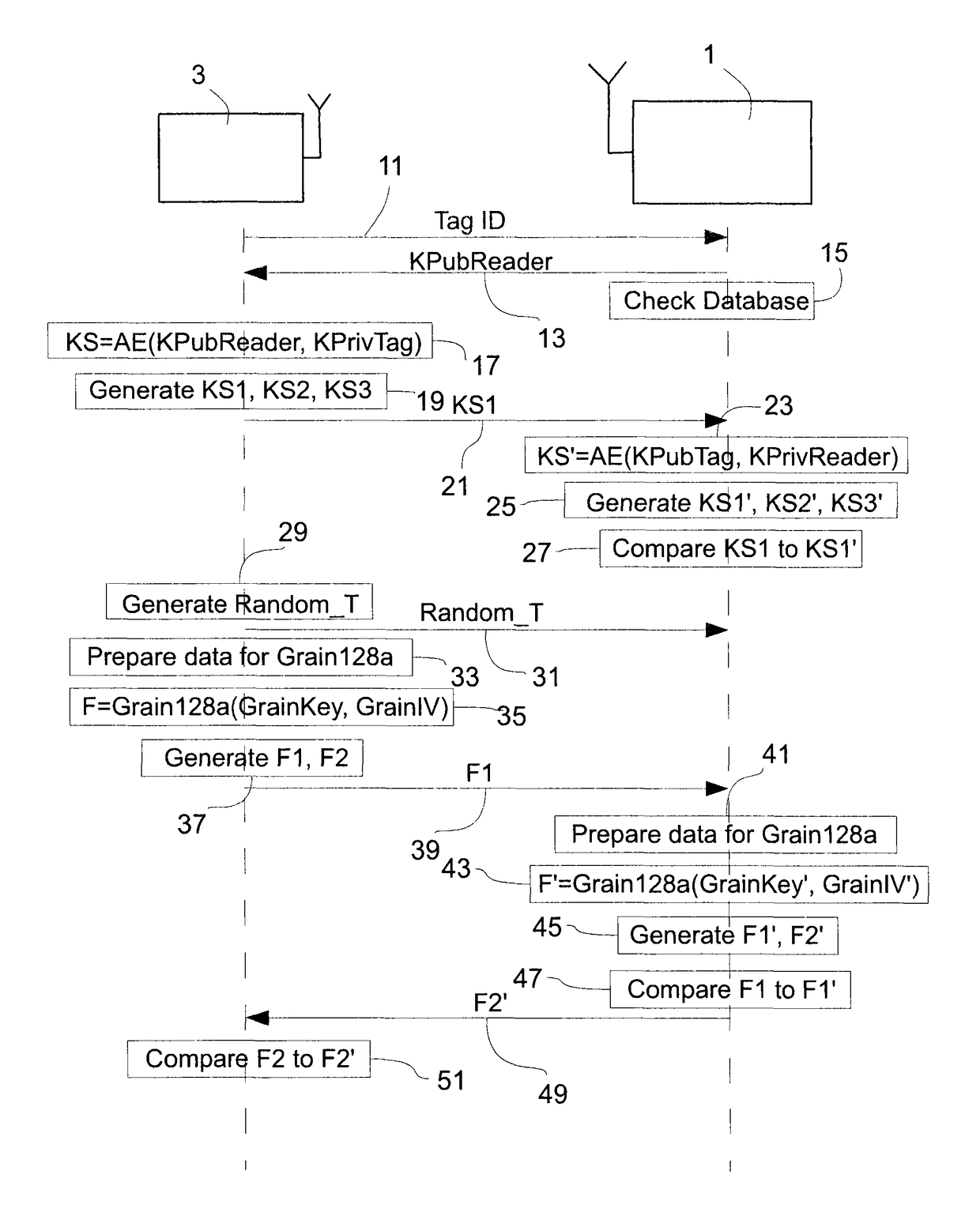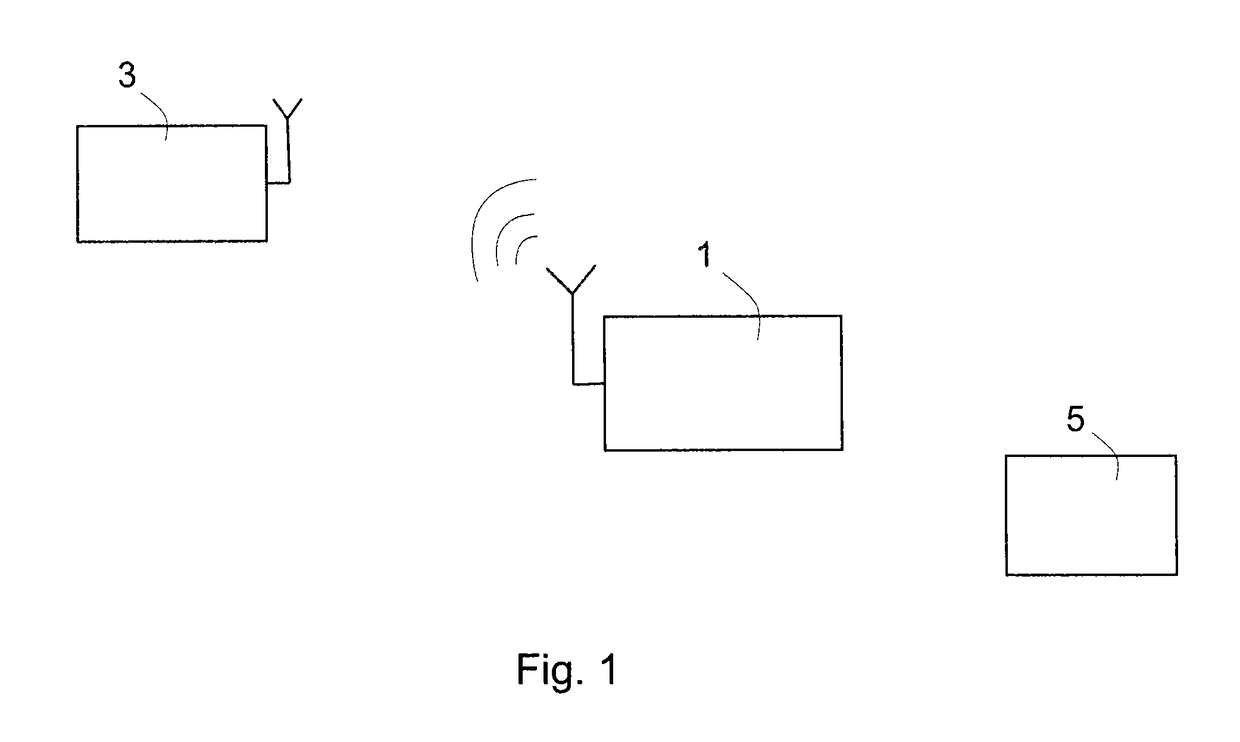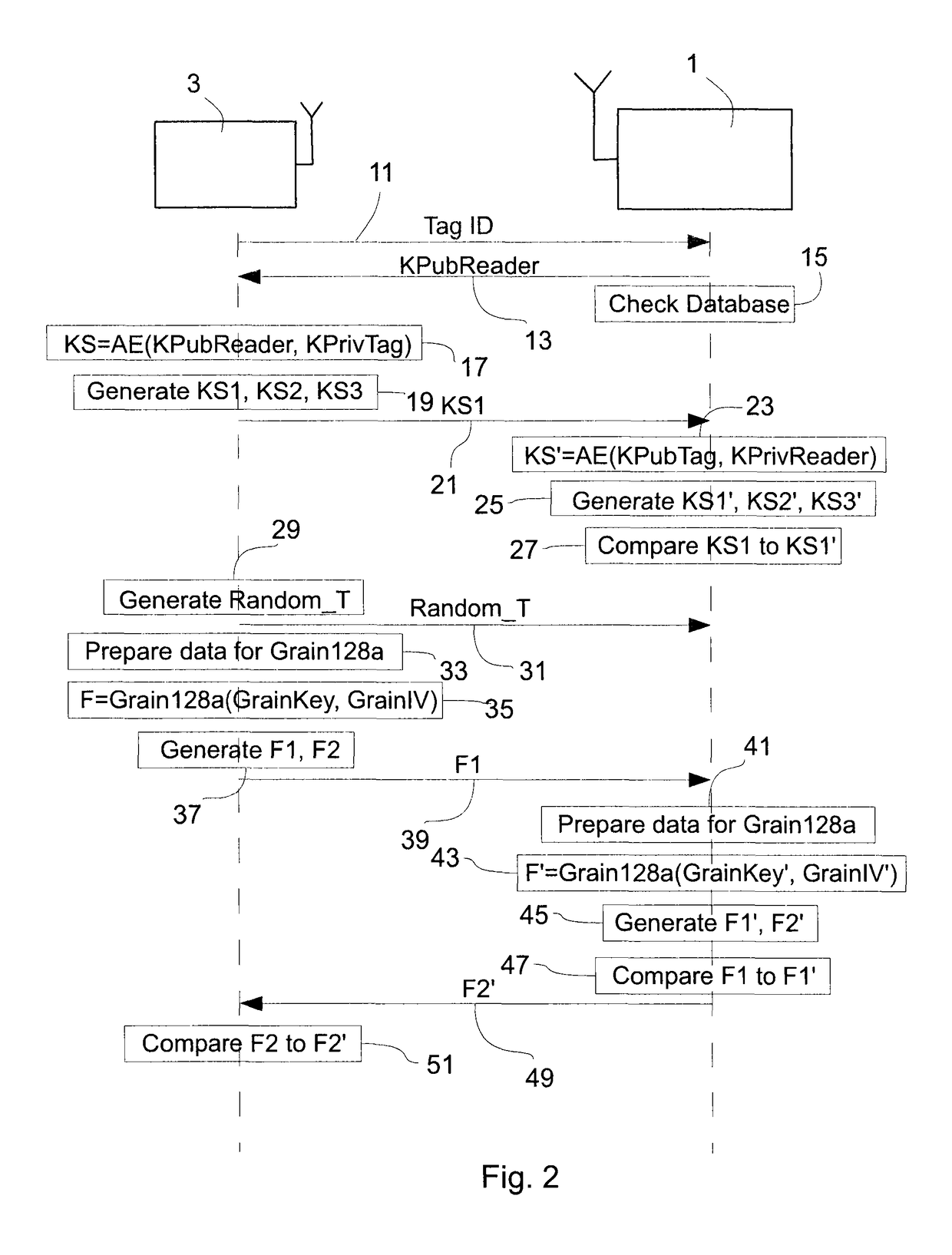Authentication by use of symmetric and asymmetric cryptography
a cryptography and symmetric algorithm technology, applied in the field of authentication methods, can solve the problems of prohibitive constraints, asymmetric algorithms are usually slow, and hardware implementations are significantly more resource-intensive, and achieve the effect of fast and reliable authentication of communication devices
- Summary
- Abstract
- Description
- Claims
- Application Information
AI Technical Summary
Benefits of technology
Problems solved by technology
Method used
Image
Examples
Embodiment Construction
[0037]An embodiment of the present invention will now be described in detail with reference to the attached figures. This embodiment will be described in the context of an RFID system used for road toll collection. However, the teachings of the present invention are not limited to the field of RFID or to toll collection applications. Identical functional and structural elements which appear in the different drawings are assigned the same reference numerals.
[0038]FIG. 1 shows an RFID system to which the teachings of the present invention can be applied. A first communication device 1, which may be an RFID reader or interrogator, is arranged to communicate with a second communication device 3, which may be an RFID tag, by means of radio frequency electromagnetic fields. The tag 3 contains electronically stored information. The tag 3 may be powered and read by the reader 1 at short ranges (for example a few meters) via magnetic fields (electromagnetic induction), and then act as a pass...
PUM
 Login to View More
Login to View More Abstract
Description
Claims
Application Information
 Login to View More
Login to View More - R&D
- Intellectual Property
- Life Sciences
- Materials
- Tech Scout
- Unparalleled Data Quality
- Higher Quality Content
- 60% Fewer Hallucinations
Browse by: Latest US Patents, China's latest patents, Technical Efficacy Thesaurus, Application Domain, Technology Topic, Popular Technical Reports.
© 2025 PatSnap. All rights reserved.Legal|Privacy policy|Modern Slavery Act Transparency Statement|Sitemap|About US| Contact US: help@patsnap.com



